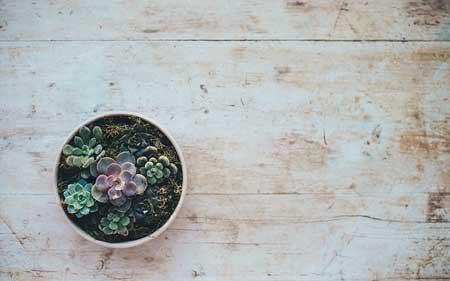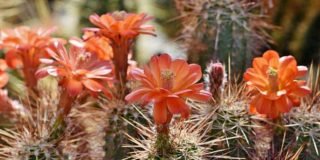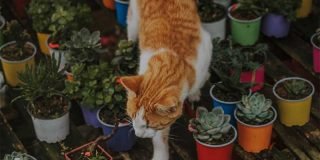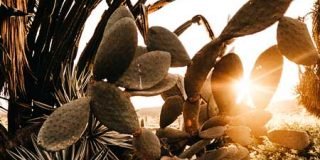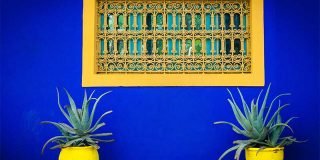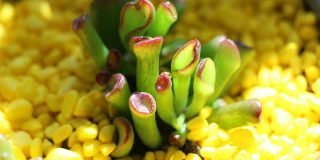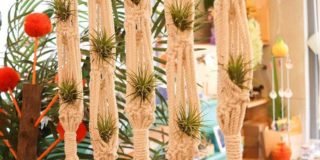Contents
Rare succulents are difficult to care for and can be difficult to find commercially. These varieties are usually hard to grow or do not root easily. Some succulents can fail to produce seeds or can be difficult to propagate because they are capable of producing only a few offsets. Tissue culture has been used to cultivate rare succulents and growing them has now become a reality.
Searching for rare succulents can be quite difficult, and if you want to know more about them, you came to the right place. Here at Eden Succulents, we will be discussing the rare succulents that you need to know about. If you want to know more information, make sure to continue to read below.

Rare succulents are difficult to care for and can be difficult to find commercially. These varieties are usually hard to grow or do not root easily. Some succulents can fail to produce seeds or can be difficult to propagate because they are capable of producing only a few offsets. Tissue culture has been used to cultivate rare succulents and growing them has now become a reality.
Searching for rare succulents can be quite difficult, and if you want to know more about them, you came to the right place. Here at Eden Succulents, we will be discussing the rare succulents that you need to know about. If you want to know more information, make sure to continue to read below.

1. Ruby Necklace (Othonna capensis). Its common name is “Little Pickles”. It belongs to the genus Othonna that comes from Africa. The Ruby Necklace has reddish-purple stems and pale, greenish-pink leaves. This succulent plant is commonly used and grown for its trailing properties. It grows all year long, can spread very fast, and produces flowers that look like daisy flowers.
If this plant is grown in low light areas, they will have a green color and purple highlights on the stem. on the other hand, if exposed to the bright sunlight, its stems and leaves will turn into ruby red. If you are planning to grow this succulent, you can plant it in a hanging planter outdoors.
2. Sand Dollar Cactus (Astrophytum asterias). It is commonly found in Mexico, as well as in Texas, USA, this plant is also known as star cactus or sea urchin cactus. This succulent is a rare succulent with no spines. It has become a popular houseplant since it was first introduced in the mid-1800s.
Since the sand dollar cactus became popular, it is now vulnerable and a lot of individuals are removing them illegally and mailing them to different parts of the country, some illegally selling them to buyers. Since 2015, there have been approximately 2000 sand dollar cacti left in the wild. If you are planning to grow this succulent, it has been discouraged to get this plant from the wild, as it can be easily grown from seeds and cuttings. Get your sand dollar cactus seeds here.
3. Little Jewel (Pachyphytum compactum). This succulent has short stems and produces a compact rosette at its crown. This plant has grey-white leaves with white veins and purplish tips. It blooms pale-yellow flowers while the rest of the flower has a pinkish-orange color which is found in the center of the plant.
This plant can thrive even if exposed to extremely high temperatures and direct sunlight. It is not frost-hardy as it can die in temperatures below -6 degrees Celsius or 21.2 degrees Fahrenheit. Make sure to bring it inside when the winter months come.
This succulent can grow in poor soil conditions just make sure to use containers with drainage holes. You can place it in areas with full or partial sunlight. Use this soil because it is perfect for succulents. It can prevent root rot, has perfect pH balance and it is pathogen-free. When watering this plant, make sure to avoid over-watering. Before watering the plant, you must allow the soil to completely dry out.

4. Living Pebbles (Conophytum subglobosum). This succulent looks like Lithops and it is commonly found in Africa. This plant just like the Lithops succulent also belongs to the mesemb family. Although the living pebbles plant is rare, it is not too difficult to care for.
A stemless plant, this succulent grows slowly and produces tiny flowers with spidery petals. The living pebbles is a perennial plant and forms pea-shaped heads. If you are growing this plant, it needs a small amount of watering and must be exposed in full sunlight or partial shade. You can use this garden syringe when watering this plant.
Living pebbles are winter-growing succulents. They are commonly found in dry areas or crevices. They are also known as rock dwellers. They usually grow in east, south, or west rocky areas or slopes. They can be found growing in mosses and other shade-loving plants. This succulent produces flowers that can be pollinated by nocturnal moths.
5. Living Rock Cactus (Ariocarpus trigonus). This plant is one of the 8 different species that belong to the Ariocarpus genus. This succulent is not a cactus, it matures slowly. It blooms yellowish-white flowers with red mid-ribs that circles the whole plant. It is low-lying succulent and grows near the ground; it grows up to 10-inches in height and 12-inches in width.
This plant can grow in a well-draining succulent/cactus soil mix. This plant needs plenty of sunlight exposure. Just make sure to avoid exposing it in excessively hot temperatures. You can use shade cloth or you can plant your living rock cactus in a container so you can move the plant during the hottest hours of the day.
If you live in areas with low humidity and room temperature, you can easily grow this plant. You can water the succulent when the soil is thoroughly dry. Avoid watering the living rock cactus during wintertime. You can also use pumice stones to allow the faster draining of water.
6. Salao (Aeonium gorgoneum). It is commonly found in the Cape Verde islands. This plant is a rare succulent. This plant belongs to the Crassulaceae family and it is shaped like mermaids. It is often used as a traditional/herbal medicine to treat cough, bronchitis, and other medical problems.
According to the IUCN Red List, there are less than 1000 plants left in the wild. It is drought-tolerant and has light green-yellow leaves with a pink tinge if exposed to strong light levels. You can use the terracotta container if you are planning to grow this plant in your garden.

7. Pelotilla de Chinamada (Monanthes wildpretii). This plant is a rare succulent; it is known to only grow on the island of Tenerife, in the Canary Islands, Spain. This succulent only grows in an area that is only about 1 km² in size. It commonly grows in crevices and fissures and tends to grow near other succulents that belong from the Monanthes genus.
It has a small population due to the reason that it grows in a frequently traveled road. This succulent is quite rare and there are only around 600 plants left in the wild because its habitat has been degraded over the years. It has been made vulnerable because it has been collected and sold as a rare succulent.
8. Paper Spine Cactus (Tephracactus articulatus). The paper spine cactus is a native plant found in Argentina. This plant is a bushy succulent and grows slowly up to 30 cm tall. The segments of the plant which are pine cone-shaped can easily fall off because they are loosely attached. It has flat papery spines thus the name “Paper Spine Cactus”. It produces white bell-shaped flowers with a yellow center and a diameter of 4 cm or 1.6 inches.
The paper spine cactus needs a small amount of water and can be exposed to plenty of sunlight. It is easy to propagate; you can use seeds or cuttings, making it a favorite among succulent growers.
This plant can be planted in dry, hot, arid climates and can even survive temperatures up to 15 degrees Fahrenheit. They can be planted and left alone outdoors, you can also plant the paper spine cactus in a container. You can repot this plant using potting soil. The paper spine cactus can be added in desert-inspired gardens or xeriscapes.

9. Haworthia truncata v. maughanii. The Haworthia truncate plant is considered as a rare succulent. Like the other haworthia species, this plant has a very unusual appearance. This plant is unique because it has transparent “windows” at the tip of its leaves.
The leaves of this plant grow in different patterns and can grow in different ways like under, over, or around other leaves. Every plant is different from each other. This plant has a snowflake design on its apex; the leaves resemble a fan with a wart-like surface and a transparent end. The rosettes are medium-sized, it does not have stems and grows slowly. The haworthia succulent is easy to propagate and cultivate, although it grows slowly, so you wait patiently for it to produce attractive heads.
This succulent prefers growing in sandy-gritty soil and it must be well-draining because the haworthia is prone to root rot. During the dry season, you must water it regularly using this watering can. You can place this plant in shaded areas, especially during summertime.
10. Vahondrandra (Aloe helenae). This plant is a perennial plant and it is considered as one of the endangered succulents. It is a native plant found in southern parts of Madagascar. There are around approximately 200-500 Vahondrandra succulents left in the wild and there is a great possibility that the population continues to decrease.
The main reason why it is considered an endangered succulent is because of the destruction of its habitat and it has been used for mining and agriculture purposes. This plant is drought-tolerant and can be repotted. You can also plant seeds in sandy soil. The seeds can germinate in a matter of few weeks, and it must be placed in areas with temperatures around 68-75 degrees Fahrenheit.
Once the seedlings sprout, it must be planted in well-draining soil and it must be kept moist to keep it growing properly. The vahondrandra produces 1-2 inches red to pale yellow flowers during late spring or early summer. This plant needs full sun exposure and can grow up to 12 feet in the wild.

Are you planning to grow different succulent plants in your home? Do you know any rare succulents that we might have missed? Eden Succulents is the best place for you to learn and know all the things about succulents. If you need any information or guide about caring and growing succulents, check out our website.
Our love for succulents allows us to share all the information we know about succulents. Our goal is to learn more information about succulents every day so if you have any comments or suggestions we would like to hear from you! We are always willing to help you out!
Fox & Fern 11" Hanging Planter Geometric Polystone
Astrophytum Asterias Nudun sand dollar cacti rare flower cactus seed
Bonsai Jack Universal Organic Bonsai Soil Mix
- Screened and pre-washed mix. Optimal pH of 6.4
- Available in bag sizes from 2 quart to 28 gallons.
- Optimized for pH, water absorption, evaporation, bulk density and particle size.

